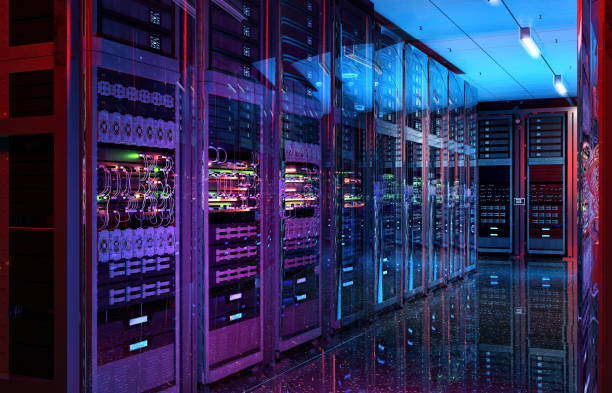The Rise of Micro Data Centers: Transforming Local Connectivity
In an era of increasing data demands and the need for low-latency processing, micro data centers are emerging as a game-changing solution. These compact, localized facilities are revolutionizing how businesses and communities access and manage digital information. But what exactly are micro data centers, and how are they reshaping the landscape of internet infrastructure? Let's dive into this innovative approach to data management and explore its far-reaching implications.

The concept of micro data centers isn’t entirely new, but recent advancements in technology and the growing need for edge computing capabilities have propelled them into the spotlight. These miniature powerhouses are designed to handle specific workloads and provide localized computing resources, effectively bridging the gap between centralized cloud services and end-users.
Key Components and Architecture
At the heart of a micro data center lies a carefully orchestrated set of components, each playing a crucial role in its functionality. The typical architecture includes:
-
Computing Hardware: High-performance servers and storage devices optimized for space efficiency.
-
Networking Equipment: Switches, routers, and other connectivity tools to ensure seamless data transfer.
-
Power Distribution Units: Specialized systems to manage and distribute power effectively within the confined space.
-
Cooling Systems: Advanced thermal management solutions, often utilizing liquid cooling or innovative airflow designs.
-
Security Measures: Both physical and digital security features to protect sensitive data and equipment.
-
Remote Monitoring: Sophisticated sensors and management software for real-time oversight and maintenance.
This compact yet comprehensive design allows micro data centers to operate as self-sufficient units, capable of handling substantial computational loads while maintaining a small footprint.
Advantages of Micro Data Centers
The adoption of micro data centers offers numerous benefits across various industries and applications. Some key advantages include:
-
Reduced Latency: By processing data closer to its source, micro data centers significantly minimize the time it takes for information to travel, resulting in near-instantaneous responses for time-sensitive applications.
-
Improved Reliability: Distributing data processing across multiple micro data centers enhances overall system reliability, as a failure in one unit doesn’t compromise the entire network.
-
Scalability: The modular nature of micro data centers allows for easy expansion or relocation as needs change, providing a flexible solution for growing businesses.
-
Cost-Effectiveness: Compared to building and maintaining large-scale data centers, micro data centers often offer a more economical option, especially for smaller organizations or specific use cases.
-
Energy Efficiency: Advanced cooling systems and optimized power management contribute to reduced energy consumption, aligning with sustainability goals.
Industry Applications and Use Cases
Micro data centers are finding applications across a wide range of industries, each leveraging the technology to address unique challenges:
Healthcare: In hospitals and clinics, micro data centers enable rapid processing of medical imaging data and support telemedicine initiatives, improving patient care and operational efficiency.
Retail: Brick-and-mortar stores are utilizing micro data centers to power inventory management systems, enhance in-store experiences through augmented reality, and facilitate seamless omnichannel operations.
Manufacturing: Smart factories are deploying micro data centers to support industrial IoT devices, enabling real-time monitoring, predictive maintenance, and automated quality control processes.
Transportation: From autonomous vehicles to smart traffic management systems, micro data centers are playing a crucial role in processing the vast amounts of data generated by modern transportation networks.
Education: Universities and research institutions are leveraging micro data centers to support high-performance computing needs for scientific simulations and data-intensive research projects.
Challenges and Considerations
While micro data centers offer numerous advantages, their implementation is not without challenges. Some key considerations include:
-
Security: Ensuring robust physical and cybersecurity measures for distributed data processing units can be complex and requires careful planning.
-
Standardization: The lack of industry-wide standards for micro data center design and deployment can lead to interoperability issues and complicate maintenance procedures.
-
Environmental Control: Maintaining optimal temperature and humidity levels in diverse installation locations presents unique challenges, particularly for outdoor deployments.
-
Skills Gap: The specialized nature of micro data centers may require additional training for IT staff accustomed to traditional data center environments.
-
Regulatory Compliance: Adhering to data protection and privacy regulations across multiple micro data center locations can be more complex than in centralized facilities.
The Future of Micro Data Centers
As technology continues to evolve, the role of micro data centers is expected to expand further. Emerging trends and potential developments include:
-
AI-Driven Optimization: Artificial intelligence will play an increasingly important role in managing and optimizing micro data center operations, from predictive maintenance to dynamic workload allocation.
-
Integration with Renewable Energy: Future micro data centers may incorporate on-site renewable energy generation, such as solar panels or fuel cells, to enhance sustainability and reduce reliance on the grid.
-
Enhanced Modularity: Next-generation designs may feature even greater flexibility, allowing for rapid reconfiguration and adaptation to changing needs.
-
Increased Automation: Advancements in robotics and autonomous systems could lead to self-maintaining micro data centers, reducing the need for on-site human intervention.
-
Expanded Edge Computing Capabilities: As the demand for edge computing grows, micro data centers will likely evolve to support more sophisticated applications, including real-time AI processing and advanced analytics.
The rise of micro data centers represents a significant shift in how we approach data processing and storage. By bringing computational power closer to end-users and data sources, these compact facilities are paving the way for more efficient, responsive, and resilient digital infrastructure. As organizations continue to grapple with the challenges of managing ever-increasing data volumes and the need for low-latency processing, micro data centers are poised to play a central role in shaping the future of connectivity and computing.





